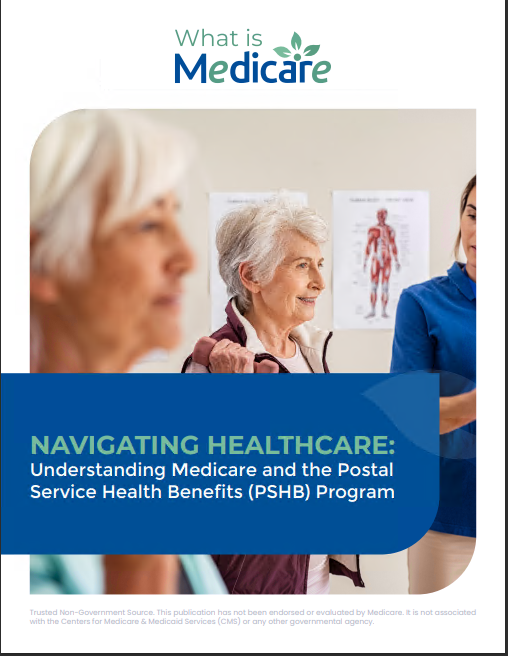Key Takeaways:
- Medicare Parts A, B, C, and D offer different types of coverage, each addressing specific healthcare needs.
- Understanding what each part covers, as well as the associated costs, helps you make informed decisions about your healthcare.
Get to Know Your Medicare Coverage
Navigating the complexities of Medicare can be challenging, but understanding the different parts and what they cover is essential for making informed healthcare decisions. This guide will help you get to know your Medicare coverage, including hospital and medical insurance, prescription drug plans, additional benefits, and costs.
Overview of Medicare Parts A, B, C, and D
Medicare is divided into four main parts, each offering specific types of coverage:
Medicare Part A (Hospital Insurance)
Medicare Part A covers inpatient hospital stays, care in a skilled nursing facility, hospice care, and some home health care. Most people don’t pay a premium for Part A if they or their spouse paid Medicare taxes while working. Key aspects of Part A include:
- Inpatient Hospital Care: Covers semi-private rooms, meals, general nursing, and other hospital services and supplies.
- Skilled Nursing Facility Care: Covers rehabilitation services and skilled nursing care after a hospital stay.
- Hospice Care: Provides comfort and support for patients with terminal illnesses.
- Home Health Care: Covers part-time skilled nursing care, physical therapy, speech-language pathology services, and more.
Medicare Part B (Medical Insurance)
Medicare Part B covers outpatient care, preventive services, ambulance services, and durable medical equipment. Part B has a monthly premium, which varies based on your income. Key aspects of Part B include:
- Doctor Visits: Covers services from doctors and other healthcare providers.
- Preventive Services: Includes screenings, vaccines, and yearly wellness visits.
- Outpatient Services: Covers hospital outpatient care, physical therapy, and more.
- Durable Medical Equipment (DME): Includes items like wheelchairs, walkers, and hospital beds.
Medicare Part C (Medicare Advantage)
Medicare Advantage (Part C) is an alternative to Original Medicare (Parts A and B). These plans are offered by private insurance companies approved by Medicare and often include additional benefits such as prescription drug coverage (Part D), dental, vision, and hearing care. Key aspects of Part C include:
- All-in-One Coverage: Combines Parts A, B, and usually D.
- Extra Benefits: May include dental, vision, hearing, and wellness programs.
- Network Restrictions: Often requires using in-network providers for the lowest costs.
Medicare Part D (Prescription Drug Coverage)
Medicare Part D provides coverage for prescription medications. These plans are offered by private insurance companies and require a separate monthly premium. Key aspects of Part D include:
- Prescription Drug Plans (PDPs): Stand-alone plans that add drug coverage to Original Medicare.
- Medicare Advantage Prescription Drug Plans (MA-PDs): Include drug coverage as part of a Medicare Advantage plan.
- Formulary: A list of covered drugs, categorized into different tiers with varying costs.
Hospital and Medical Coverage Explained
Understanding the coverage provided by Medicare Parts A and B is crucial for managing your healthcare.
Inpatient Hospital Care (Part A)
Part A covers hospital services such as:
- Semi-Private Room: Includes your room and board.
- Meals: Provided during your hospital stay.
- General Nursing: Includes basic nursing services.
- Medications: Drugs administered during your stay.
- Other Hospital Services and Supplies: Includes medical tests, surgical procedures, and other necessary treatments.
Outpatient Care (Part B)
Part B covers a wide range of outpatient services, including:
- Doctor Services: Visits to primary care physicians and specialists.
- Preventive Services: Screenings, vaccinations, and annual wellness visits aimed at early detection and prevention.
- Outpatient Procedures: Minor surgeries and procedures performed outside the hospital.
- Mental Health Services: Outpatient therapy and counseling.
- Home Health Services: Includes part-time skilled nursing care and therapy services.
Prescription Drug Coverage Under Medicare
Medicare Part D helps cover the cost of prescription medications. Here’s what you need to know:
Formulary and Tiers
Each Part D plan has a formulary, or list of covered drugs. These drugs are placed into different tiers, with each tier representing a different cost level. Typically:
- Tier 1: Generic drugs with the lowest copayments.
- Tier 2: Preferred brand-name drugs with moderate copayments.
- Tier 3: Non-preferred brand-name drugs with higher copayments.
- Tier 4: Specialty drugs with the highest copayments.
Coverage Phases
Part D coverage is divided into phases:
- Deductible Phase: You pay the full cost of your drugs until you meet the deductible.
- Initial Coverage Phase: You pay a copayment or coinsurance for covered drugs.
- Coverage Gap (Donut Hole): After reaching a spending limit, you pay a higher share of costs until you reach the catastrophic coverage threshold.
- Catastrophic Coverage: Once you surpass the out-of-pocket limit, you pay a small coinsurance or copayment for covered drugs for the rest of the year.
Additional Benefits and Services
Medicare Advantage plans often include additional benefits beyond what Original Medicare offers. These can include:
Dental Coverage
- Routine Exams and Cleanings: Regular dental check-ups.
- Fillings and Extractions: Basic dental treatments.
- More Extensive Procedures: Sometimes covers crowns, bridges, and dentures.
Vision Coverage
- Eye Exams: Routine eye check-ups.
- Glasses and Contact Lenses: Coverage for eyewear.
- Eye Surgery: Some plans may cover procedures like cataract surgery.
Hearing Coverage
- Hearing Exams: Regular hearing tests.
- Hearing Aids: Coverage for devices to improve hearing.
Wellness Programs
- Fitness Programs: Memberships to gyms and fitness classes.
- Nutritional Counseling: Support for healthy eating habits.
- Chronic Condition Management: Programs to manage conditions like diabetes and heart disease.
Costs and Out-of-Pocket Expenses
Understanding the costs associated with Medicare is essential for budgeting and financial planning.
Premiums
- Part A: Most people do not pay a premium if they or their spouse paid Medicare taxes while working. If not, they may pay up to $499 per month.
- Part B: The standard premium for 2024 is $164.90 per month, but it can be higher based on your income.
- Part C: Varies by plan and may include the Part B premium.
- Part D: Varies by plan and is based on the drugs covered and the plan’s pricing structure.
Deductibles and Coinsurance
- Part A: A deductible of $1,556 for each benefit period, with coinsurance costs based on the length of the hospital stay.
- Part B: An annual deductible of $226, after which you pay 20% of the Medicare-approved amount for most doctor services.
- Part C: Varies by plan and may include deductibles, copayments, and coinsurance.
- Part D: Varies by plan and includes deductibles, copayments, and coinsurance for medications.
Out-of-Pocket Maximum
Medicare Advantage plans have an out-of-pocket maximum, capping the total amount you spend on covered services each year. Once you reach this limit, the plan pays 100% of covered costs.
Making an Informed Decision
Choosing the right Medicare plan involves understanding the different parts of Medicare, evaluating your healthcare needs, and comparing costs. Consider the following steps:
- Assess Your Healthcare Needs: Determine how often you visit doctors, what types of services you require, and whether you need additional benefits like dental or vision care.
- Compare Plan Options: Look at the coverage details, costs, and provider networks of different Medicare Advantage and Medigap plans.
- Check for Additional Benefits: See if the Medicare Advantage plans you’re considering offer extra benefits that are important to you.
- Evaluate Costs: Consider the premiums, deductibles, copayments, and out-of-pocket maximums of each plan.
- Seek Professional Advice: Consult with a licensed insurance agent or Medicare counselor to help you make the best choice.
Conclusion
Understanding your Medicare coverage is essential for making informed healthcare decisions. By knowing what each part of Medicare covers and the associated costs, you can choose the plan that best meets your needs and ensures you receive the care you need.
Contact Information:
Email: [email protected]
Phone: 5139037551
Bio:
Jeff Spencer developed his passion in helping others with financial planning at a very young age
while enlisted in the Air Force, stationed in England working on aircraft as a crew chief. He
quickly stood out as an individual that had a passion for helping others; his squadron
commander asked him to accept an assignment as the squadron financial advisor. With
training, Jeff developed his skills as an advisor for military men and women in his squadron.
While in the Air Force he continued his education in business, enrolling in classes overseas with
professors from Cambridge University and Oxford University where he studied economics and
international banking. Separating from the Air Force, and a desire to help others, led him to a
small investment firm in Burbank Ca. As a licensed stock broker, working with individuals from
the Disney studios, Paramount pictures, and The Tonight Show to name a few along with
several small business owners executing financial investments built on long and short-term
investments provided experience in several levels of planning.
Time being a great educator, traveling to many places, and developing plans for hundreds of
clients has provided a lifetime of wisdom for Jeff. Â Working through so many economic cycles
and dedicated to continuing his thirst for knowledge has developed the confidence necessary to
provide the trust and experience needed to provide quality advice for individuals preparing for
retirement. His dedication to a lifetime of income and protection along with peace of mind and
many years of happiness is a commitment that he takes very seriously.
Over the years, Jeff has continued with his passion and recognizes how money can become a
powerful tool that should be used to deliver safety and protection in our lives. Financial
freedom can be defined in many ways (its powerful). Financial planning can help ease fear,
misfortunes, frustrations, and bring us peace of mind and happiness. All too often greed and
fear enter our lives and can leave us with unexpected pain. Age gives us years of life
experiences that develop wisdom, and always seeking knowledge may bring us to a point in life
where we begin to understand the difference between what we want in life and what we need
in life. Sometimes with proper planning we can have it all.
Jeff Spencer understands what a lifetime of dedication with the government looks
like, and letting go of the connection with that relationship can be difficult. When he left the
service, he had to find his way and knows what it was like making the changes. He developed
the IEA way (Introduction Education and Application)








